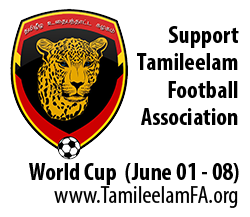Posts Tagged ‘History & Culture’
The Great Raja Raja CholanBy Admin - December 19th, 2013 |
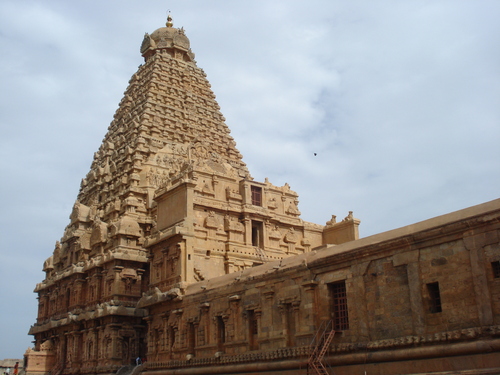 |
|
This post is part of the Tamil Heritage Month Initiative. Tamil Heritage Month began in 2010 and seeks to celebrate Tamil heritage, culture, and history. Throughout this month and January, we will be providing you with educational material and poetry such as this that seeks to help us celebrate and understand our culture, roots and heritage. Written By: Kayalvizhi J. Rajaraja Cholan was one of the greatest kings of the Chola Empire who ruled between 985 CE and 1014 CE. Rajaraja Cholan and his son, Rajendra Cholan have been credited with the expansion of the Chola Empire by virtue of winning land through military battles against the Sinhala and Pandaya armies. His strength, valour and power has been celebrated in Tamil literature, movies and songs. Some of his greatest achievements, the building of the Raajarajeswaram in Thanjavur, still remain as one of the most amazing architectural achievements to date. The Raajarajeswaram in Thanjavur is now regarded by UNESCO as a World Heritage Site. The construction of the temple was completed on the 27th day of the 25th year of Rajaraja Cholan’s reign. Rajaraja Cholan was named Arulmozhi Varman at birth. His name became Rajaraja Cholan (Great King) with the victories he won in battle. He was the third son of Parantaka Sundara Cholan and Vanavan Mahadevi. Rajaraja His elder brother, Aditya II was assassinated, although the circumstances surrounding that are unclear. According to inscriptions on the Thanjavur Temple, his only known son is Rajendra Cholan. Brihadeeswara Temple built by Raja Raja Chola I in 1010 A.D. A lot of what we know today, we have read or heard about – but many of it comes from records he left himself. Rajaraja Cholan was a King who understood the value of a recorded history and brought about standardized inscriptions. He recorded all of his military achievements and important events in gold, copper and stone inscriptions. He is credited as the first king of South Asia to do so. Even the past Pallava, Pandhya and Chola dynasties failed to leave a record of their military achievements in stone. His successors have all followed suit in leaving behind a recorded history of their military achievements. Rajaraja Cholan was also instrumental in retaining past historical information and the records of his predecessors. An inscription found at Tirumalavadi notes that Raja Raja Cholan ordered the inscriptions from central shrine in the Vaidyanatha Temple should be recorded in a book and re-inscribed after it was being rebuilt. Rajaraja Cholan also issued that all donations and grants made to the Thanjavur Temple, a temple build during his reign, be engraved in the stone. Rajaraja Cholan Status ManimandapamRajaraja Cholan was a King tolerant to the religious practices of others – although he was a follower of Lord Siva, he has constructed Vishu Temples, the Buddhisht Chaudamani Vihara. His sister, Kundavi, built a Jaina Temple, the Kundavi Devi Jinalaya. His sister Kundavi was regarded highly among him, and Rajaraja Cholan had much admiration for her. She was married to a Bana Price, Vallavaraiyan Vandiyadevan. Rajaraja Cholan is also widely regarded for his administrative practices. He brought into a system of audit and control that was governed by village assemblies and public bodies. Through his policies, administration and accountability were brought about. His organization also carried on to creating one of the most powerful standing armies and navy. His son, Rajendra Cholan was named supreme commander of the northern and northwestern dominions of the Chola Empire. Rajaraja Cholan engaged in many conquests, some of his last being his naval conquests in the sea, Maldives and neighbouring regions. The influence of Tamil dominance can still be seen in some of the islands today. For examples, some of the islands in Indonesia, which were once conquered by Rajaraja Cholan have Tamil names: Aru, Natuna=middle, Banda=Pandyan, Pahlawan=Pallavan, Zulu=Chola, Rajaraja Cholan was a widely respected and regarded King by his subjects. His valour, power and expansion of the Chola Empire brought him much admiration. He has been referred to by other names including Abayakulasekarar (one who has a lot of groups who have surrendered before him), Azhagu Cholar (the most handsome Chola King), Ravikulamanikam (the King like a Ruby), Sanda Parakramar (The King with the power of Wind), Nigarili Cholar (The Chola King without comparable Kings), Panditha Cholar (the Chola King who is complete with knowledge) and Jayamkonda Cholar (The King who is always victorious). Rajaraja Cholan continues to be a person of interest to Tamils, he has been the subject of many books and dramas. Including movie, Rajaraja Cholan by Shivaji Ganesan, Kalki’s literary masterpiece, Ponniyin Selvan with Arulmozhi Varman as the protagonist, Sujatha’s Kandalur Vasantha Kumaran Kathai, Seshadri’s Raja Kesari, and many more. |
What’s in a name?By Admin - December 6th, 2013 |
 |
|
Written By: Kayalvizhi J. You probably hear it more than anything else, you either love it or hate. You never use it yourself, but everyone else uses it. What is it? That’s right, your name. Names are a significant part of a person’s identity. In giving children personal names, Tamils are known to follow uncommon practices. Although not practiced widely today, traditionally Tamil names were not just given lightly – a child had to be named within 12 days of birth, there was an appropriate number of syllables a name could have based on the time of birth, the final syllable of the name followed a phonetic structure, and certain names and letters were to be avoided. Tamils also chose personal names which conveyed a desirable semantic quality – such as power, happiness, success, prosperity, beauty, victory, greatness or devotion or a highly esteemed abstract quality – such as sathiyam (truth) or azhagu (beauty). The second part, or ending of a name usually is also derived from a common suffix with such qualities. For example, durai (lord), rajan (king), devi (lady), vati (lady) are all common suffixes. The devotional name is also a popular one – they have taken such prominence that people have forgotten what the name itself means, and only what God or Lord it represents – for example, Murugan means handsome male, however many only know it as Lord Murugan. Tamils also have in the past named based on non-Tamil historical figures paired with a name of Tamil relevance – such as Lenin Kumara-Samy. Other rules also applied when choosing a name for a child, such as the first two males of a family are named after the grandfathers and the first two daughters are named after the grandmothers. In fact, the Tamil word ‘peran’ meaning grandson has been derived from this fact ‘per name’ peran actually means the boy who bears the name, and ‘pertti’ means the girl who bears the name. We however, have been moving away from choosing names of Tamil relevance to other names. With Tamils choosing now to give children shorter names and more Anglo-Saxon names because they believe it is more convenient and employable (Krishnan becoming Kris). But doing so, we will loose the Tamil name our children have – which also includes part of their identity. We should bring back family names that retain our culture, and we should name our children after significant Tamil figures.In fact, Tamils are one of the only indigenous groups that derive names from other cultures as well, we borrow words and names from Sanskrit, Judeo-Christian (English, Hebrew and Portuguese) and Urdu. This however, meddles with the authenicity of our culture and identity. Let’s take the name Xavier, a name that many Tamil Christians use. There is no way to write Xavier in Tamil, Ceviyar is the only way to transliterate Xavier into Tamil. We are choosing names that we cannot even transliterate into Tamil properly. But other than names itself, what most people find different about Tamil names, is the way we use last names. In Tamil society, once a woman marries, her surname becomes her husband’s first name. Let’s use a simple example. Take the name Kajal Aggarwal. Kajal being the first name and Aggarwal being the last name. Say Kajal Aggarwal decided to marry Karthi Sivakumar. Her name would be Kajal Karthi, not Kajal Sivakumar as would be in many other cultures. Any children she has will also be given her husband’s first name. With this structure, it is easy to loose your ability to track down your ancestors. Like some cultures where a family name is given, Tamils family names change with every generation. How beneficial is it really to us? If you look at coming times, with more Tamils choosing Anglo-Saxon names over Tamil names, how will our successors track down their genealogy if they wanted to? Initially, Tamils used a caste name as a “second last name,” one which just came with their first and last name. For instance, Kajal Aggarwal would be followed by a caste name ________ (Caste Name) and Kajal Karthi would be followed by a caste name___________ (Caste Name). This structure would have a link back to the caste name even if the surnames were different, allowing for people to track their ancestors. This was thought to link people, however, with this no longer being practiced today (for good reason!), Tamils lose their ability to track down their ancestors by name. A Tamil person could never track down someone using a geneology tracker and find out about their ancestors using name as a marker. If you look at the Jewish community or Chinese communities or other communities, there are certain names that you know belong to one family or that are inherently Jewish – Steinberg, Rittenberg or Chen for instance. You know that someone is Jewish based on their name, and you can track down the history of their family because they all have the same name. I argue that we should stop the practice of taking the first names of our husbands and fathers and instead start using a family name, one that would leave a trackable lineage. My father knows his grandfather’s name, but he does not remember the names of anyone before that, had we had a common family name, we would have known. Secondly, the names that we do take, need to be of Tamil influence and relevence. We should stop borrowing Sanskrist and Judeo-Christian names – because that doesn’t reflect our identity and it doesn’t grow our culture. Names are a significant part not only of one’s identity, but of a national identity and a cultural identity. We should take pride in our Tamil names, after all, we have the most beautiful names. |
25th Anniversary of Maveerar NaalBy Admin - November 20th, 2013 |
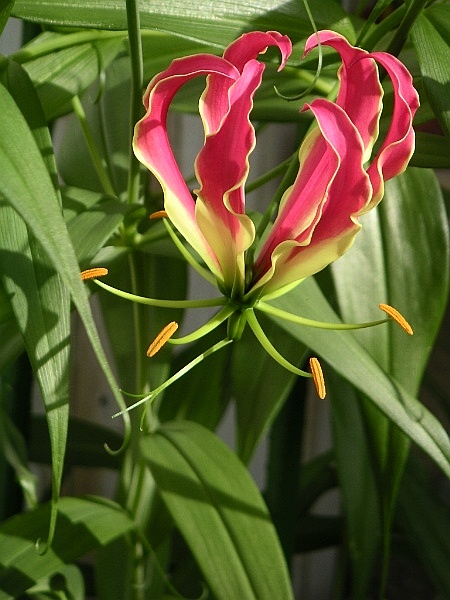 |
|
By: Athithan Kurukulasingam Maveerar Naal is a day of remembrance for our beloved soldiers who fell fighting for a cause they felt worthy enough to sacrifice their lives for. This year marks the 25th anniversary of Maveerar Naal and it is more important than ever to remember why these soldiers sacrificed their lives for us. One shouldn’t just use this day of remembrance to reflect on the struggles of our brothers and sisters, rather we should relive their sacrifices on a day to day basis. Our brothers and sisters who have perished wouldn’t want us to reflect negatively on the past; moreover, they would want us to fight for the future so that the struggles they went through would not be wasted. On November 27th we should pay homage to our brothers and sisters out of respect, compassion and gratitude. They sacrificed they lives so that we could grow up without the barriers and hardships they faced. When people imply that our children are our future, I immediately think back to our Maveerar. Most of our freedom fighters were just like you and I, young people with big ambitions, a long life to look forward to. They all dreamt about making their mark on the world; however, as much as they wanted to live their lives, they were willing to give it all up so that the kids of tomorrow never would have to worry. Sacrifice can mean many different things; giving up that last piece of chocolate; giving your cousin that toy you loved as a kid; offering your seat to an elderly person, these are all examples of sacrifices we make on a day to day life. Now let’s look at the sacrifices our fellow brothers and sisters made back home. They sacrificed first and foremost their families, a thought that many of us will never be able to comprehend. One truly cannot appreciate the value of family until they are taken away from us. Our freedom fighters in a selfless act, willingly left their families so that they can fight for the many. Another sacrifice that was made was the education of our freedom fighters. We all know the oppressive and underhanded tactics used by the government to singlehandedly restrain Tamil students from progressing on towards higher education. This methodical process prohibited even the greatest of minds from succeeding. To combat this issue, our brothers and sisters sacrificed their careers for us. Many of our fallen soldiers would be in their 40’s right now if they were alive today. Who knows what great scientist, doctor, engineer or better pioneer we could have known had they been alive. The list of sacrifices that our brothers and sisters made can go on for a very long time but there is one final sacrifice I would like to mention, comfort. Our freedom fighters gave up the comforts we take for granted in our day to day lives. Our freedom fighters gave up the comforts of their own homes; they oftentimes fought in the jungles of Mulliyvaikal; they gave up their friends; they gave up their favourite foods and many more. These small comforts cannot be undervalued. Sacrifice according to you and I may now might not seem as drastic as it once did. On November 27th we should pay our respect to those very sacrifices our brothers and sisters made. Maveerar Naal is a day of remembrance. We should stand in silence and reflect on the lives of our freedom fighters. When you go and lay your flowers or garlands on the Thuyilum Illam, you should stand humbly and with appreciation. We should as a collective whole try to find a way to bring to fruition the dreams of those we lost. The struggle to fight for our own homeland continues, we the students of today have the opportunities and means to wage a new kind of war. A war that has the capabilities to bring to light the atrocities that were committed by the government and their senior members. This war can achieve accountability and punishment for the crimes that were committed; furthermore, this war can achieve our own national state of Thamil Eelam. While our fallen soldiers rest in heaven, they will only truly rest in peace when they see the rise of a new sunrise on the soils of Thamil Eelam. “Nothing I can say will ever be able to express the feeling of Maaveerar Naal. I have always celebrated Maaveerar Naal abroad, and to actually know what sadness and pride combined would feel like whilst standing on the soil that we so long to own as ours, the soil on which thousands had shed blood and tears whilst fighting for self determination, the soil that we would one day call Tamil Eelam, was absolutely amazing.” (Sampavi, 2005) |
Uncovering the TruthBy Admin - November 6th, 2013 |
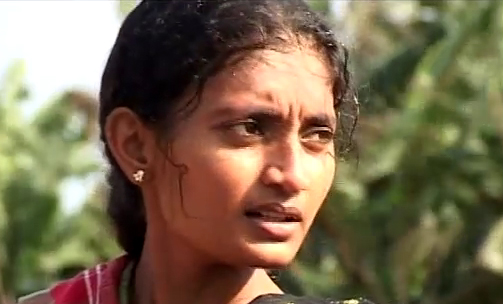 |
|
By: Athithan Kurukulasingam New evidence has surfaced surrounding the murder of LTTE News Reporter and singer Isaipriya also known to many as Shoba. The Sri Lankan government has been steadfast in their statements claiming that Isaipriya died in battle; however, this new piece of evidence uncovered by the Channel 4 team shines light into uncovering the real truth. Footage attained by Channel 4 show Isaipriya alive and unharmed in the custody of Sri Lankan soldiers. The footage then shows her bound and dead with visual signs of sexual torture. A woman who surrendered and was in the custody of soldiers clearly lived out the final moments of her life in pain, without humility and most importantly not with the level of dignity that is acceptable by any standard. There are clears signs of human rights violations that cannot be dismissed. The Sri Lankan government cannot just ignore this new piece of evidence; however, it isn’t difficult to pinpoint their next steps. From a historically standpoint, the government follows certain procedures when it comes to these matters. They acknowledge the fact that such evidence exists, they come out with an official statement saying that these new allegations are just that, allegations. They will say that it has been doctored, fabricated or somehow misinterpreted. This level of ownership is not acceptable by any standard but it’s the sad fate that we have to deal with. The murder of Isaipriya is a clear human rights violation and the government has to own up to it. The timing of this new video forces the hands of many political leaders around the world. The nearing commonwealth summit which features many world leaders is being hosted this year by Sri Lanka. Our own Prime Minister in a bold stand is boycotting the summit and has urged others to do so as well. The murder of Isaipriya and the human rights violations will force these leaders to make statements in lieu of the new evidence and it will also call on Sri Lanka to provide some sort of explanation that is acceptable in the eyes of the world. Sri Lankan officials have been caught doing what they have denied for so long and that is committing clear human rights violations. |
My Mother …By Admin - October 5th, 2013 |
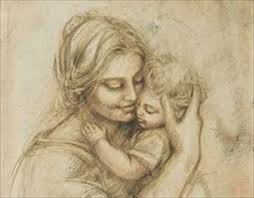 |
|
Written by: Gayathiri Sivakumar When I was a little girl, my mother told me that if I studied well, maintained my fair skin, and was a ‘good’ girl, did not talk to boys, I would land myself a Prince. She said, if I grew up with how she suggested, then everyone would want to marry me. I dutifully followed her command, after all, I wanted to ensure that I married a Prince. I maintained my A-student status, I stayed out of the sun, I was polite, obedient and meek, and I hardly talked to boys (unless it was school-related).Until I was in high school that is. It was then at some point, where I felt like I was not living my own life. It felt like I was living out my mother’s life. I felt entrapped, although I was a young teenager, here I was, pretending to be someone I was really not. This feeling was really brought on when my mother began to parade me around to the community, letting them know what a catch I was. But it was all superficial. I met boys like myself, successful, but unhappy. Puppets really. I felt like how Jeyam Ravi felt in Santhosh Subramanium. I felt I had to please her. I resented my mother. I blamed her continuously, I felt like she was the cause of my unhappiness. I felt that I lived a sheltered life, one where I was made into a socially awkward person, despite being born in Canada, was because of her repressive nature. I knew nothing of the popular bands, brands, or anything – I was totally forbidden from particiapting in normal activities as such. I felt like I was reprived of life and happiness because of the sheltered life she raised me in. |
Modern Women, Ancient HealingBy Editor - October 13th, 2012 |
 |
|
Written by: Gayathiri Sivakumar A lot of the things our ancestors do, are really beneficial to us. If we want to keep our culture and traditions alive, it is up to us to learn about different aspects of our culture. This time, I wanted to learn more about home remedies used by Tamils and went on another quest. |
What is the world’s oldest language still spoken today?By Editor - August 22nd, 2012 |
 |
|
RECENT archaeological evidence suggests that Tamil spoken in the Indian sub-continent could have been the language used by the Indus civilisation and even the Sumerians. |

